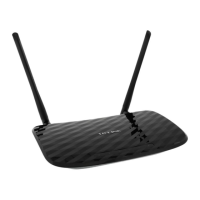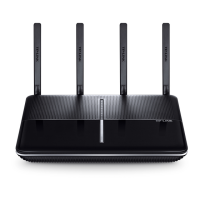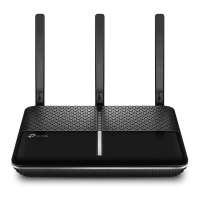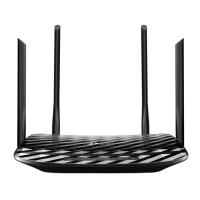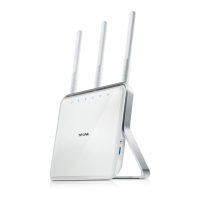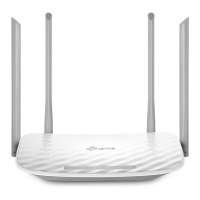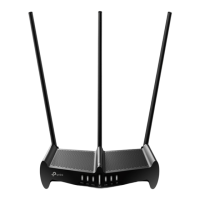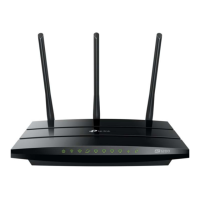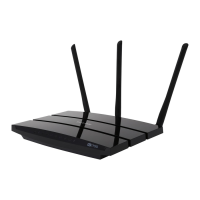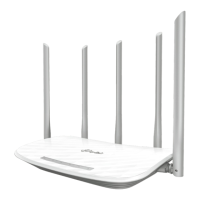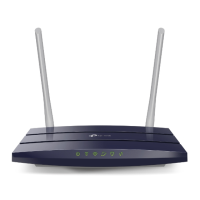Do you have a question about the TP-Link Archer C20 and is the answer not in the manual?
Explains the router's functions, speed, security features, and ease of installation for SOHO networks.
Lists key functionalities like 802.11ac compliance, high-speed ports, USB support, and advanced security features.
Provides step-by-step instructions for physically connecting the router to the modem and computer.
Guides through setting up TCP/IP properties on a PC and verifying network connection to the router using ping.
Details the wizard-based process for quickly configuring the router's internet and wireless settings via web interface.
Explains how to access the router's web-based utility by logging in with default credentials.
Refers to the initial quick setup guide for a fast and easy configuration of basic router functions.
Details configuration for Wide Area Network connection types like Dynamic IP, Static IP, PPPoE, L2TP, and PPTP.
Explains how to configure the router's Local Area Network IP address, subnet mask, and MAC address.
Configures the SSID, region, and basic wireless mode for the 2.4GHz network.
Sets up wireless security protocols like WPA2-PSK with AES encryption to protect the network.
Configures the SSID, region, and basic wireless mode for the 5GHz network.
Sets up security protocols for the 5GHz wireless network to ensure data protection.
Configures the router's DHCP server, IP address pool, and lease time for automatic IP assignment.
Enables or disables Network Address Translation (NAT) and Hardware NAT for managing IP addresses.
Configures virtual server entries to redirect incoming internet traffic to specific internal IP addresses and ports.
Configures firewall, VPN passthrough, and Application Layer Gateway (ALG) settings for network protection.
Enables DoS protection and configures thresholds for filtering various flood attacks like ICMP, UDP, and TCP-SYN.
Sets internet access schedules and restricts access to specific websites for child PCs.
Manages bandwidth allocation by setting upload and download limits for the internet connection and specific rules.
Guides on downloading and installing the latest firmware to update the router's software and features.
Restores all router configurations to their original factory default settings, useful for troubleshooting.
Allows changing the router's login username and password to enhance security and prevent unauthorized access.
Lists comprehensive technical specifications for the router, including standards, protocols, ports, and wireless features.
Explains the router's functions, speed, security features, and ease of installation for SOHO networks.
Lists key functionalities like 802.11ac compliance, high-speed ports, USB support, and advanced security features.
Provides step-by-step instructions for physically connecting the router to the modem and computer.
Guides through setting up TCP/IP properties on a PC and verifying network connection to the router using ping.
Details the wizard-based process for quickly configuring the router's internet and wireless settings via web interface.
Explains how to access the router's web-based utility by logging in with default credentials.
Refers to the initial quick setup guide for a fast and easy configuration of basic router functions.
Details configuration for Wide Area Network connection types like Dynamic IP, Static IP, PPPoE, L2TP, and PPTP.
Explains how to configure the router's Local Area Network IP address, subnet mask, and MAC address.
Configures the SSID, region, and basic wireless mode for the 2.4GHz network.
Sets up wireless security protocols like WPA2-PSK with AES encryption to protect the network.
Configures the SSID, region, and basic wireless mode for the 5GHz network.
Sets up security protocols for the 5GHz wireless network to ensure data protection.
Configures the router's DHCP server, IP address pool, and lease time for automatic IP assignment.
Enables or disables Network Address Translation (NAT) and Hardware NAT for managing IP addresses.
Configures virtual server entries to redirect incoming internet traffic to specific internal IP addresses and ports.
Configures firewall, VPN passthrough, and Application Layer Gateway (ALG) settings for network protection.
Enables DoS protection and configures thresholds for filtering various flood attacks like ICMP, UDP, and TCP-SYN.
Sets internet access schedules and restricts access to specific websites for child PCs.
Manages bandwidth allocation by setting upload and download limits for the internet connection and specific rules.
Guides on downloading and installing the latest firmware to update the router's software and features.
Restores all router configurations to their original factory default settings, useful for troubleshooting.
Allows changing the router's login username and password to enhance security and prevent unauthorized access.
Lists comprehensive technical specifications for the router, including standards, protocols, ports, and wireless features.
| Color | blue/white, blue |
|---|---|
| Wi-Fi Speed | 0.733 gigabits per second |
| Band Technology | dual |
| Frequency Band | 2.4 ghz, 5.0 ghz |
| QoS Traffic Prioritization | yes |
| Ethernet Standard | 10/100 |
| Ethernet Switch | yes |
| Wireless Networking Standard | wi-fi 5 |
| Wireless Standard | ac, n |
| 2.4 Ghz Streams | 1 |
| 5.0 Ghz Streams | 1 |
| Antennas | 3 |
| Firewall | spi |
| Data Encryption | yes |
| Encryption Type | wpa, wpa2, wpa-psk, wpa2-psk |
| Ports | rj-45 |
| LAN Ports | 4 |
| WAN Ports | 1 |
| Built In Modem | no |
| Height | 1.4 inches |
|---|---|
| Width | 9.1 inches |
